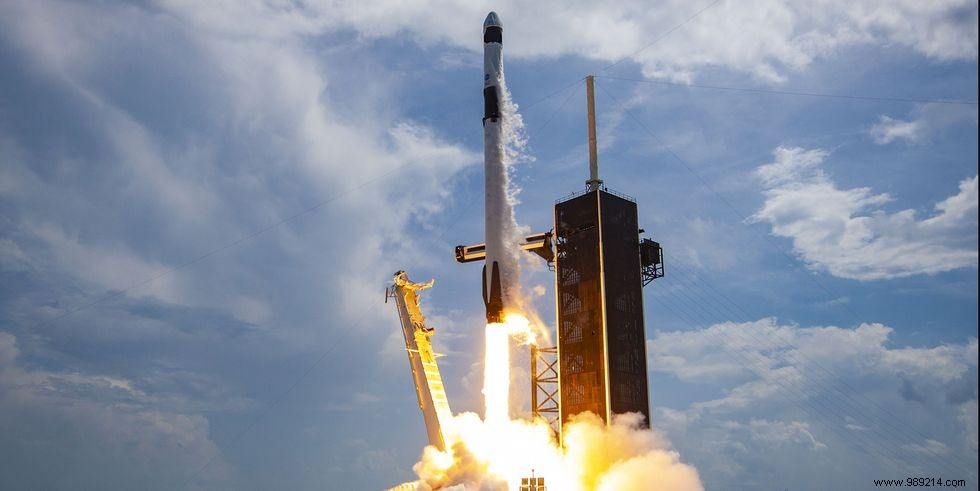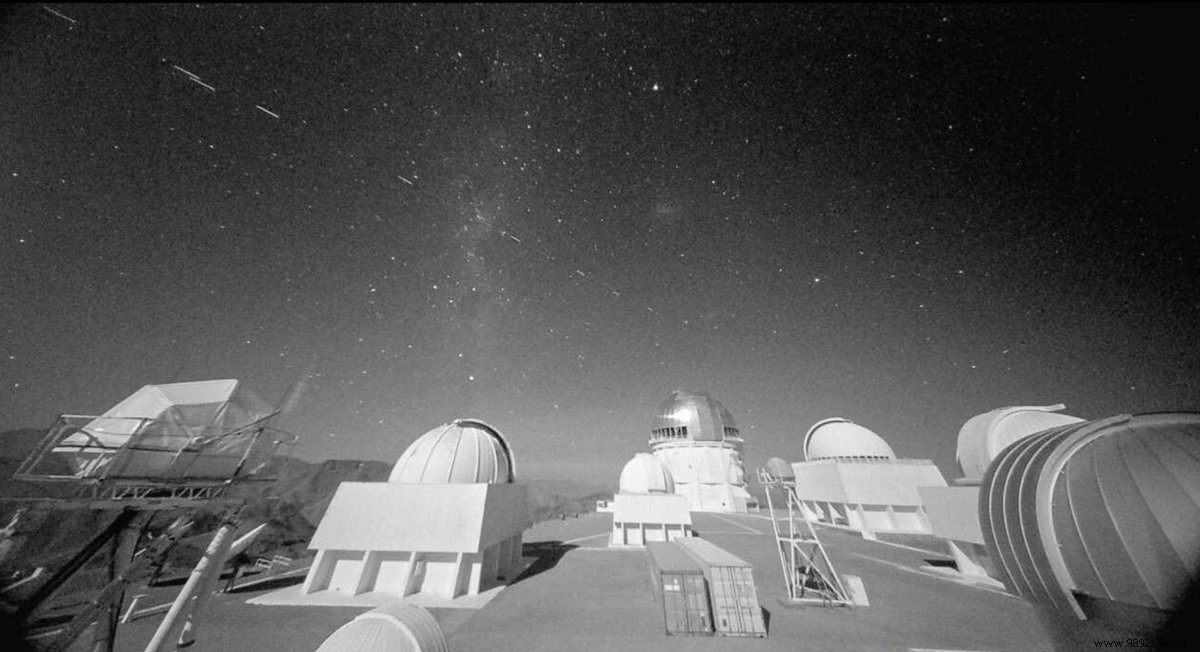Constellations of satellites now being deployed to provide broadband internet access could fundamentally change the way astronomers study the night sky, a report warns. Some recommendations have been listed in order to minimize their impact.
To get the internet, we depend on cables buried underground (or under the ocean) and cell towers. The problem is that not everyone has access to it, especially in the most remote areas. To allow a better signal, the ideal would be to place thousands of satellites in low orbit communicating with each other in low orbit.
Several companies are already on the job. SpaceX, with its Starlink constellation project, is the best known. More than 600 of these satellites have already been launched out of the 12,000 planned. Note that the next launch is scheduled for this Sunday (August 30). On this occasion, 60 new satellites capped atop a Falcon 9 will be deployed.
But SpaceX is not alone. Amazon, for example, also aims to launch around 3,200 broadband satellites as part of its Kuiper project. OneWeb also released 74 of the 650 planned in its fleet. On the other hand, we do not know if this mega-constellation will finally see the light of day. The company has indeed just gone bankrupt, but will obviously be bought by a consortium led by the British government and the Indian company Bharti Global.
Still, that's a lot, a lot of satellites. To put that into perspective, there are currently around 2,500 operational around Earth, and humanity has launched less than 10,000 objects since the dawn of the space age in 1957. Potentially hampering observations of the sky nocturnal.

Many astronomers have indeed already expressed their aversion to these new constellations. And for good reason, capturing photographs of low-light objects generally requires several hours of exposure time. Point your instrument at the wrong place and you can be sure that these thousands of satellites will spoil your rendering. These satellite trails could pose a particular problem for telescopes that view large swaths of the sky in visible and infrared light.
According to a new report from the American Astronomical Society , the main organization of professional astronomers in North America, the most annoying satellites will be those moving more than 1,200 km above the Earth. These will be "visible all night in summer and significant fractions of the night in winter, fall and spring and will have negative impacts on almost all observing programs" , can we read. OneWeb satellites are particularly concerned.
Those moving lower, about 600 km above the ground should however pose fewer problems. Those of SpaceX fit into this category.

All these satellites will still have an impact on observations of the sky, no matter what. But it might be possible to minimize it further by following a few rules. The report listed some of them:
– Reduce satellite brightness by controlling their orientation and/or darkening them (SpaceX is starting to do this).
– Support the development of image processing software that minimize the impact of satellite drag.
– Make satellite orbital information available to allow astronomers not to point their telescopes at it.
Finally, the report also recommends launching fewer satellites, if at all . This is the only option, it says, that would have a "zero impact" on astronomical observations. Nevertheless, it seems very "naive" to imagine SpaceX or Amazon backtracking as the economic interests are important. In the future, operators and astronomers will have to get along and work together so that everyone can find something for themselves.